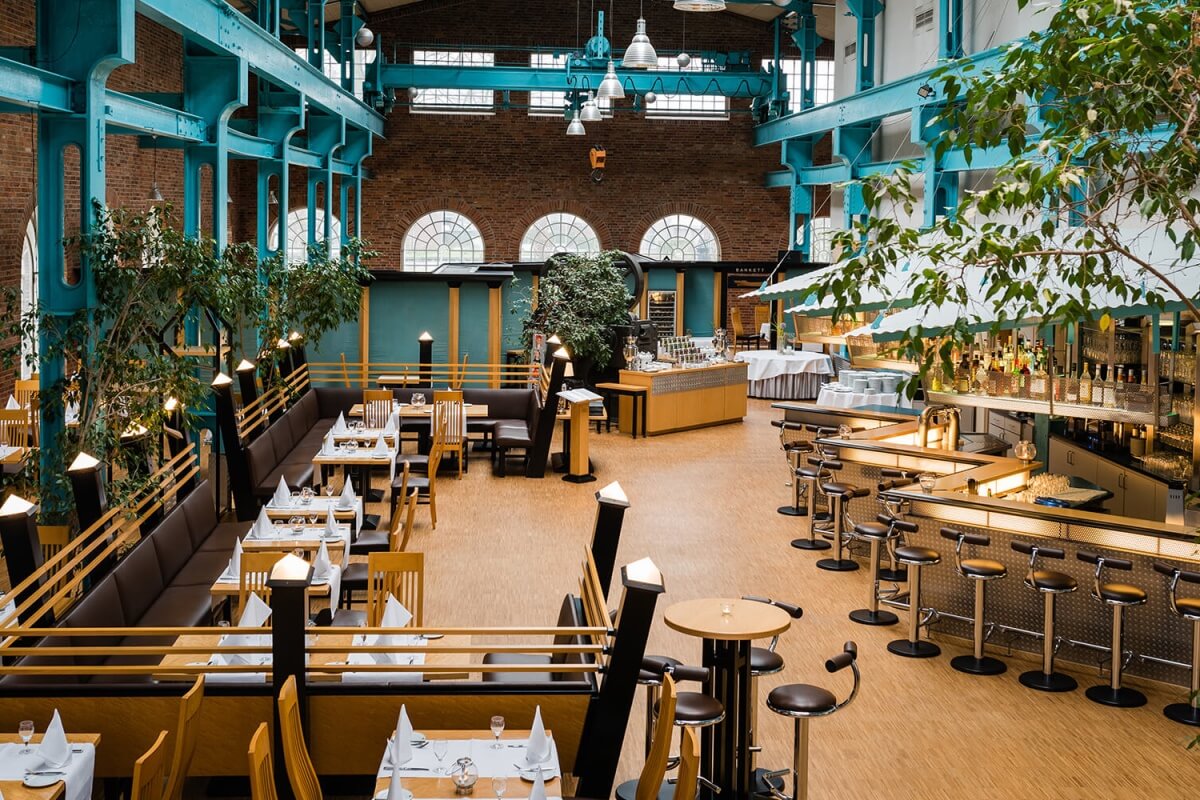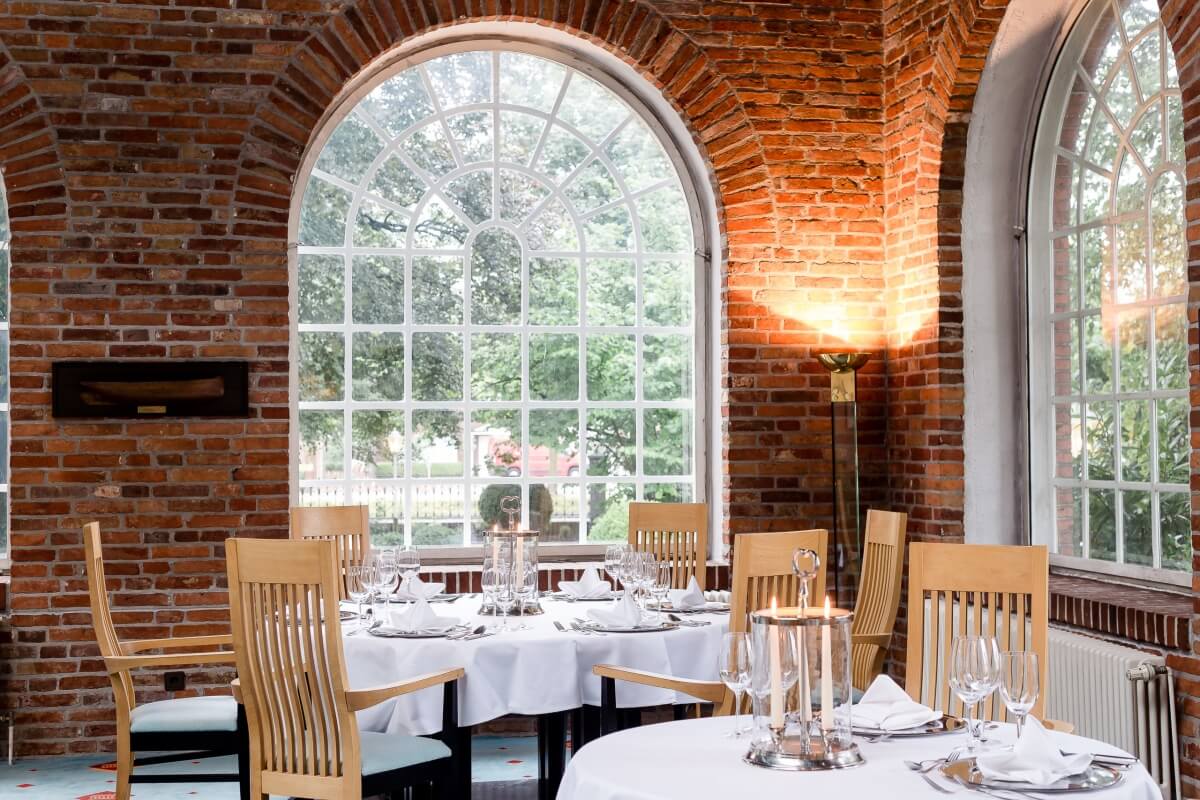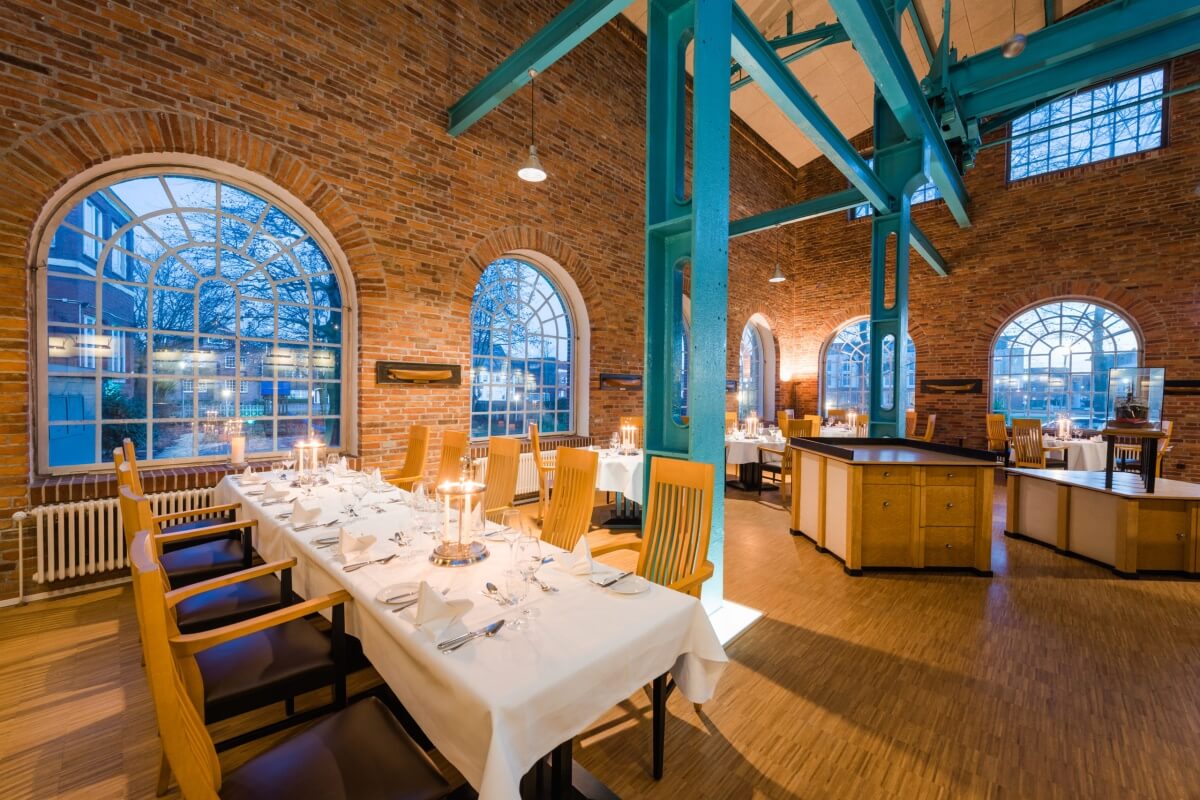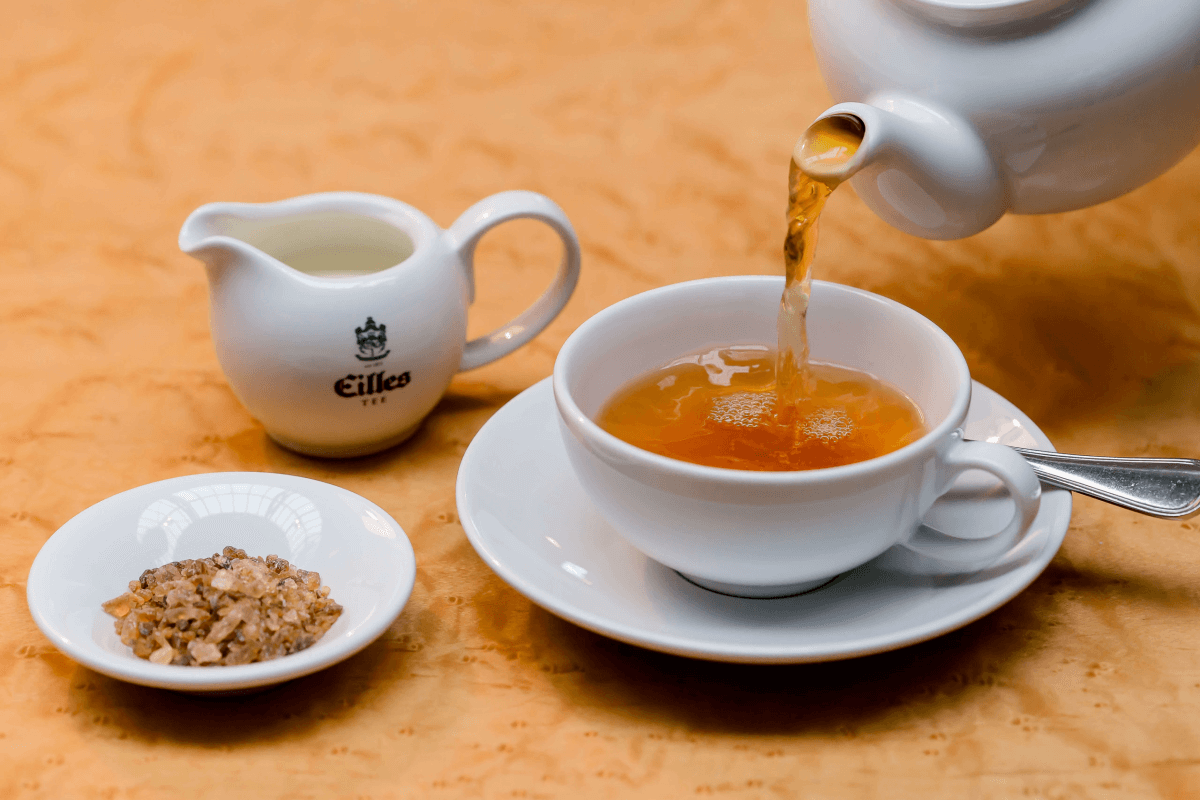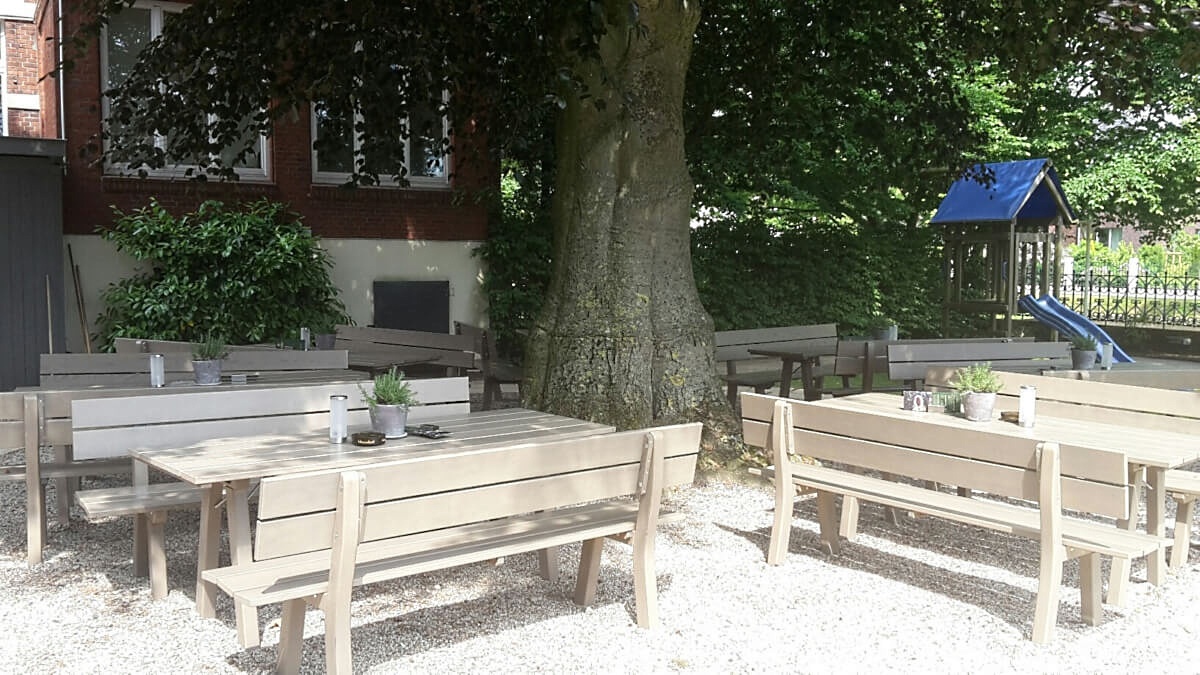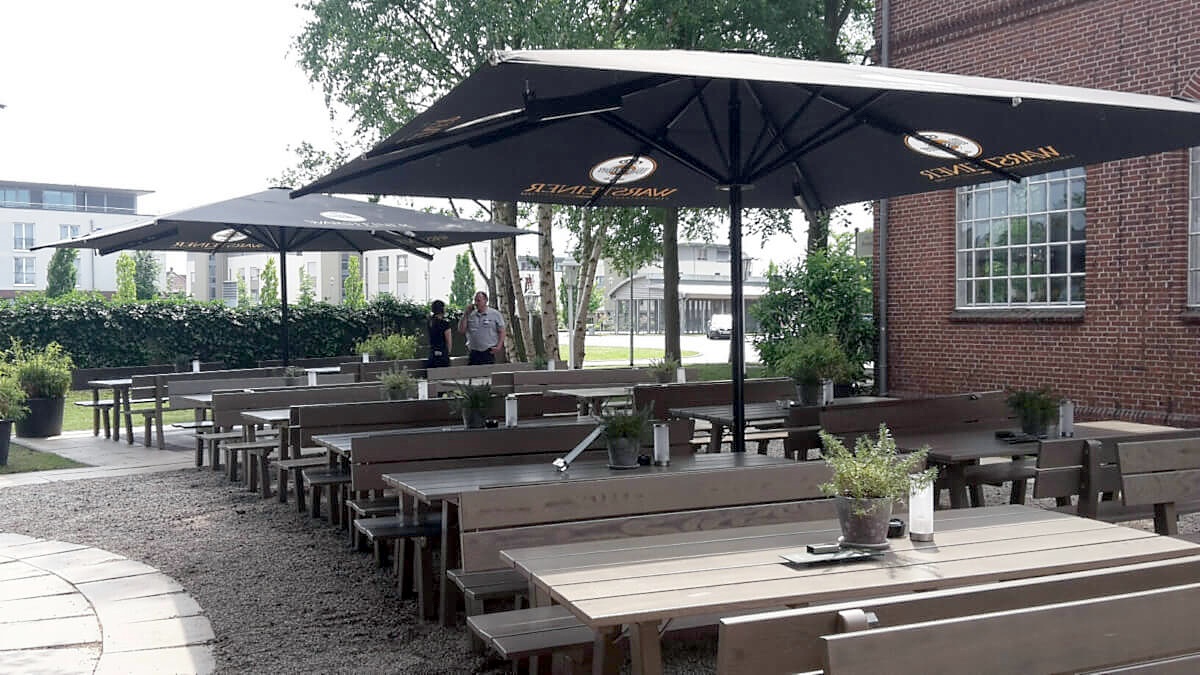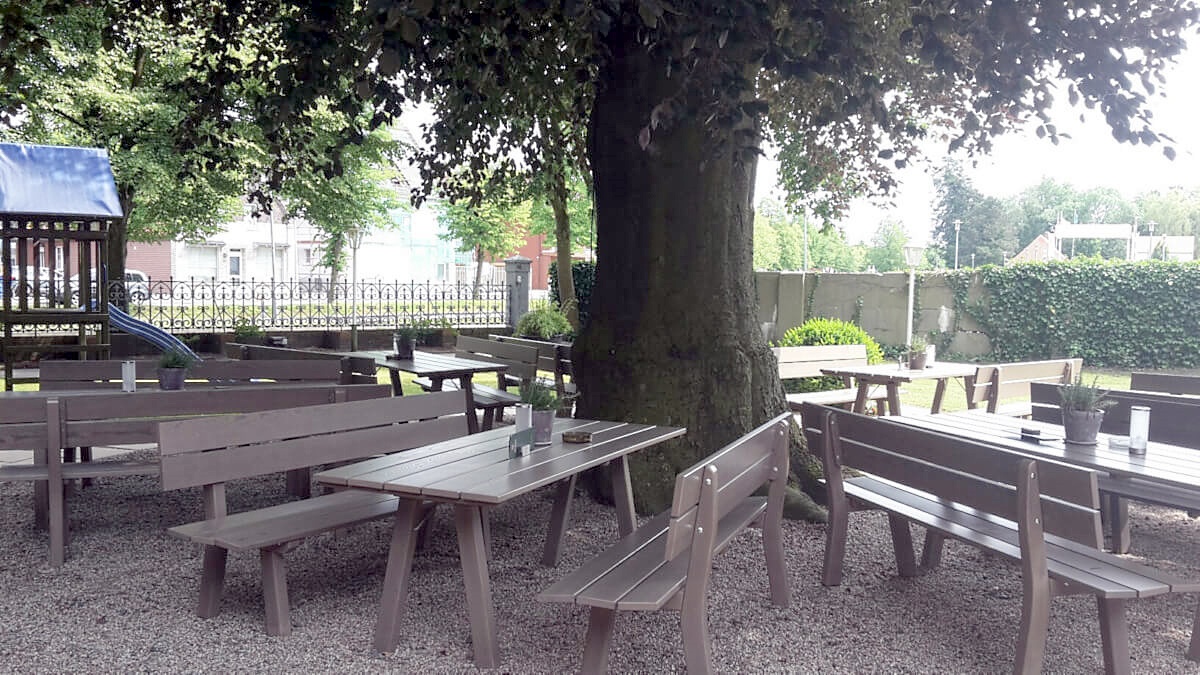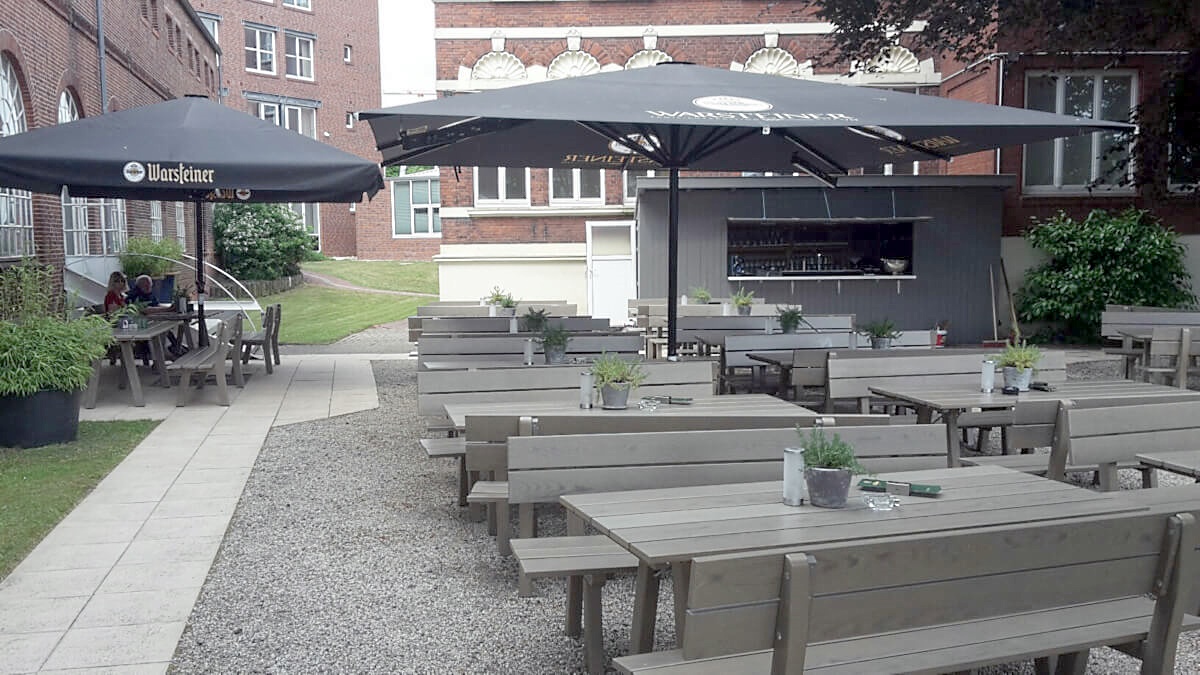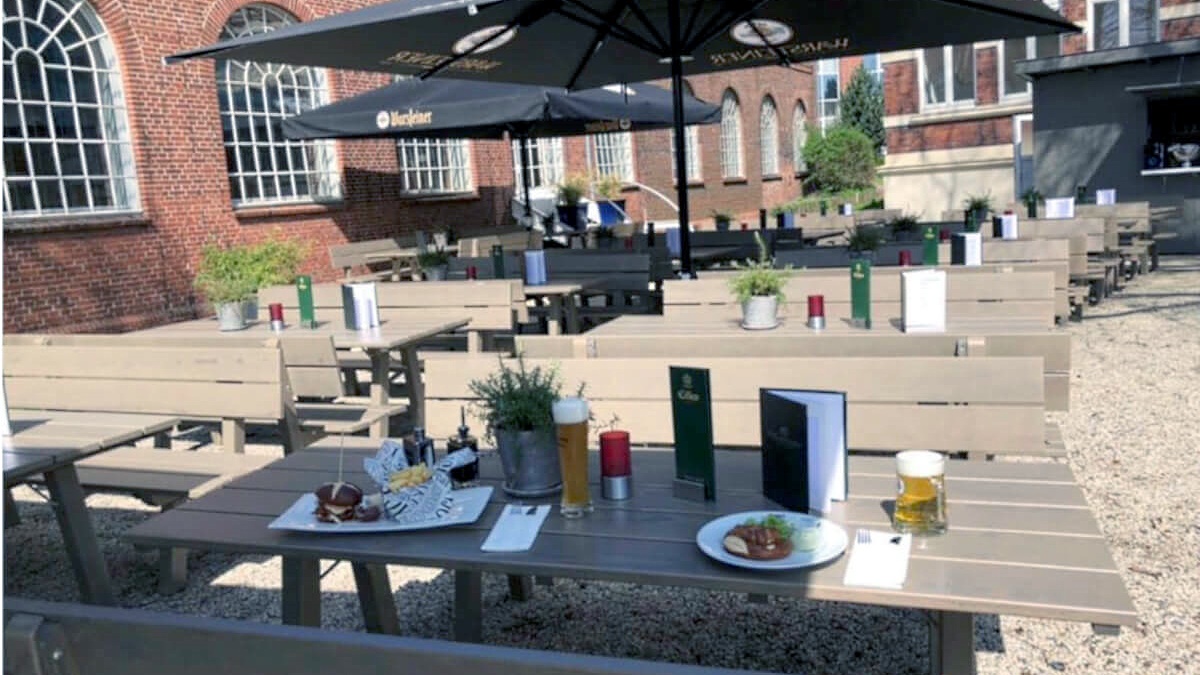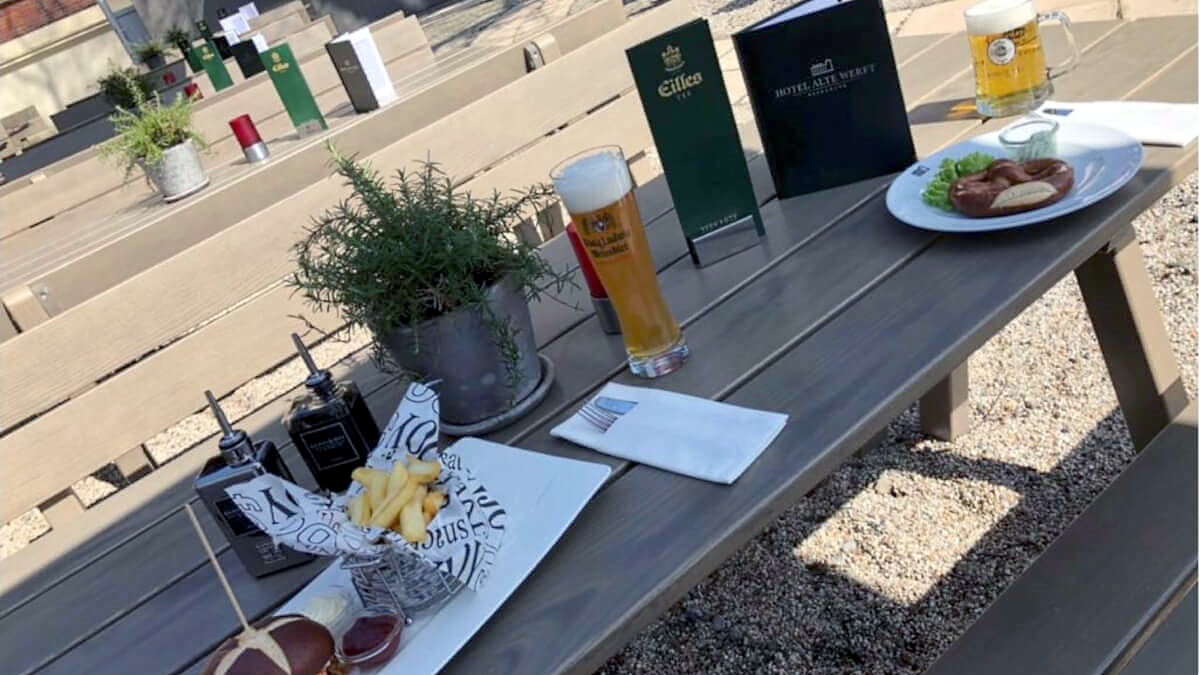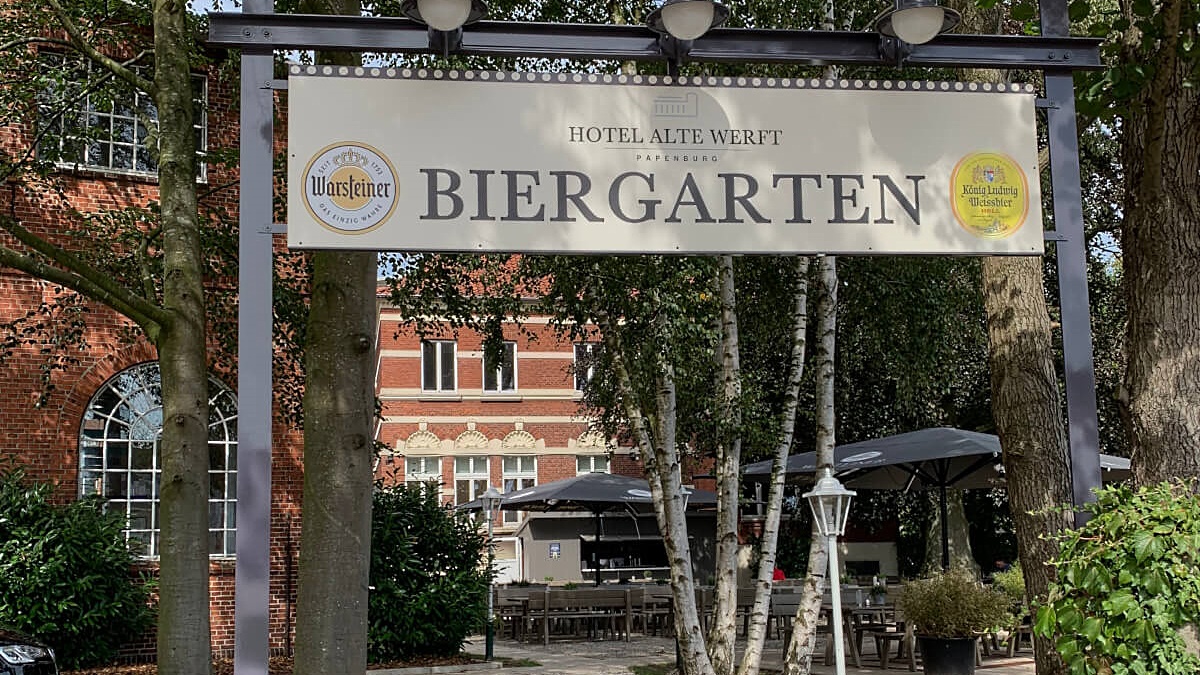- Tel.: +49 (0) 4961 920 - 0
- E-Mail: info@hotel-alte-werft.de
- +49 (0) 4961 920 - 0
- info@hotel-alte-werft.de
Information
Our restaurant and its history
Whether in the Restaurant Schnürboden, where you can indulge in delicious specialities from our kitchen, or in the separate banquet room Graf Goetzen, which owes its name to a passenger steamer from Papenburg that made a film career in Africa - our restaurant can look back on an exciting history. A cosy beer garden - directly connected to our Restaurant Schnürboden - offers a popular place to stay for our guests in summer.
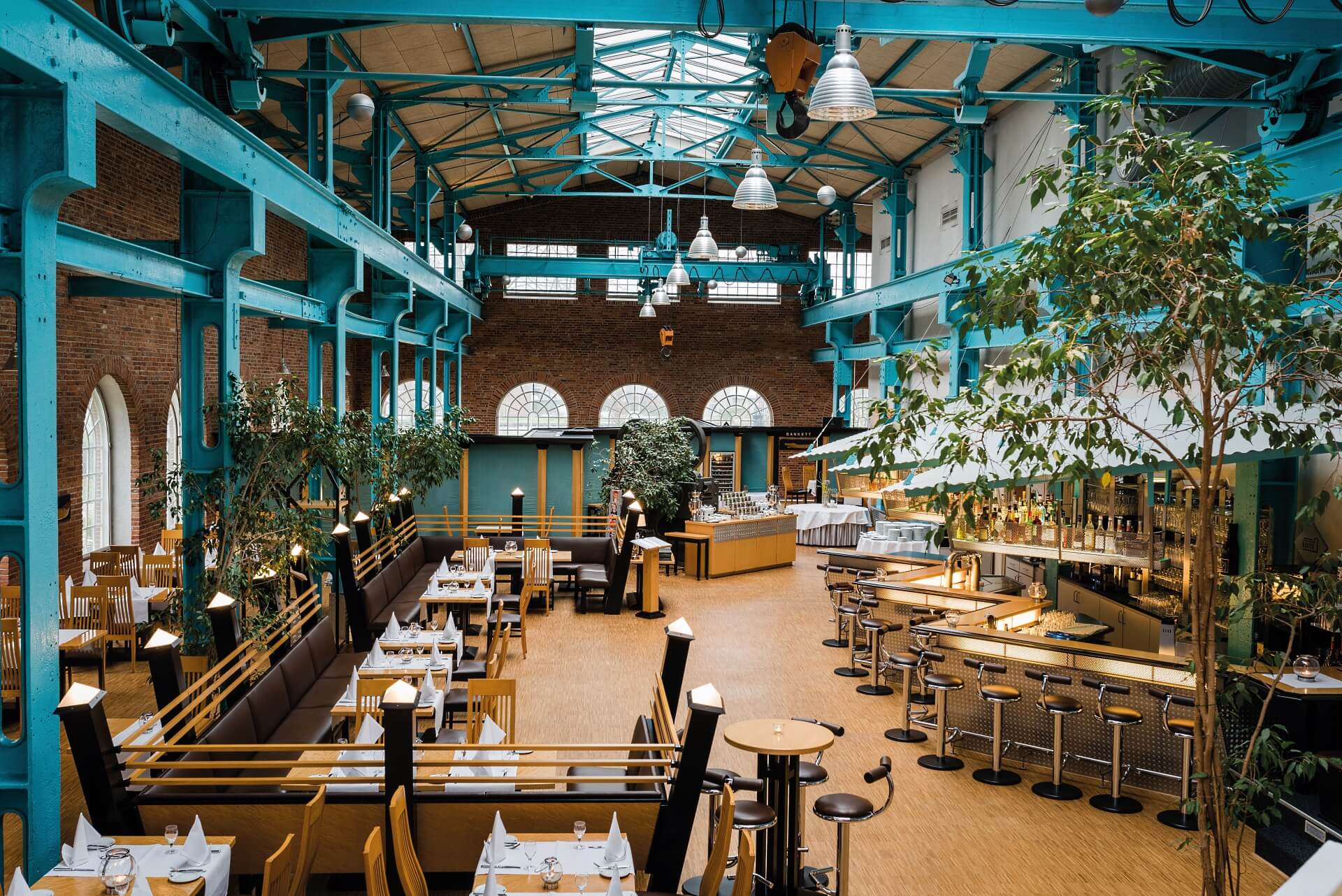
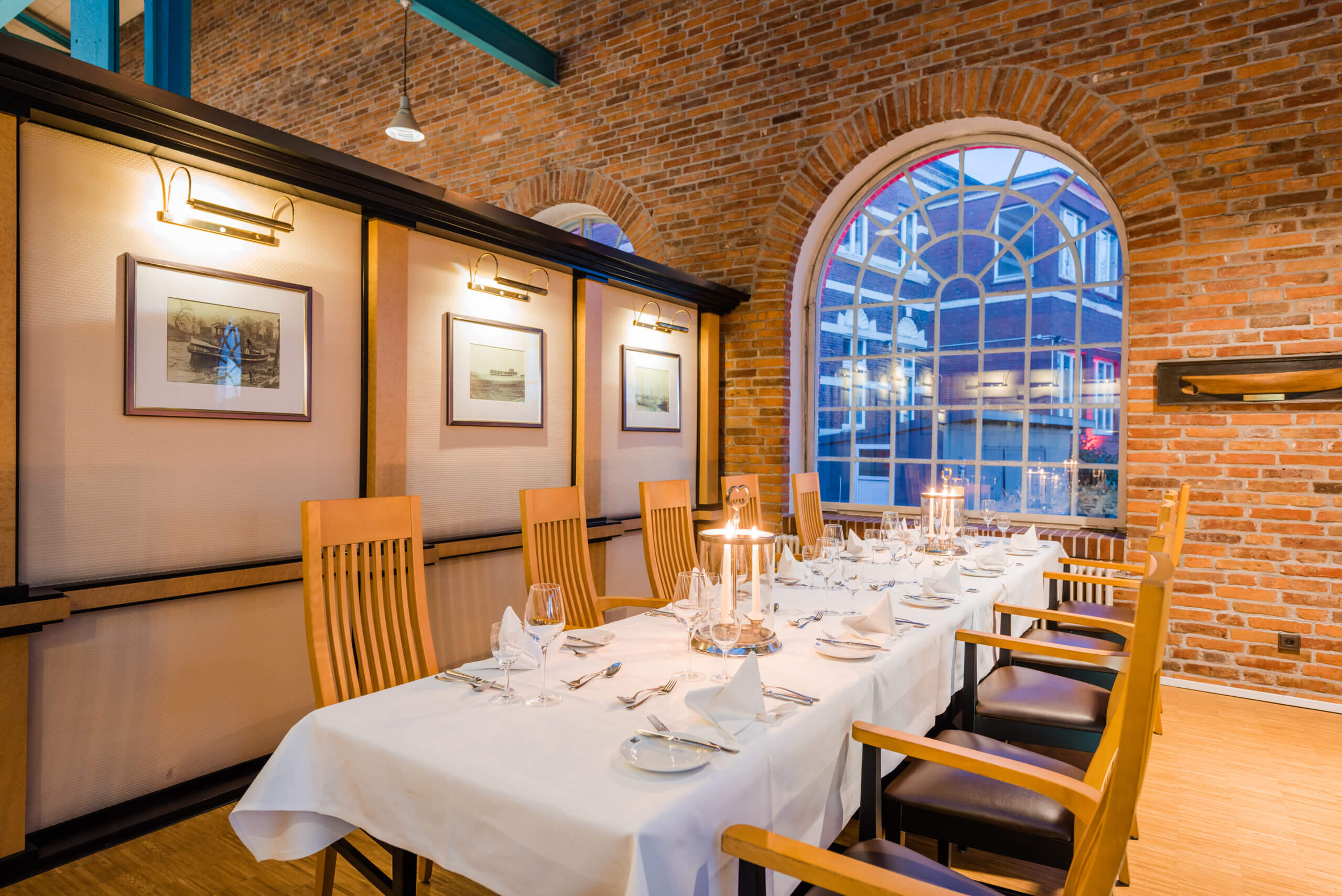
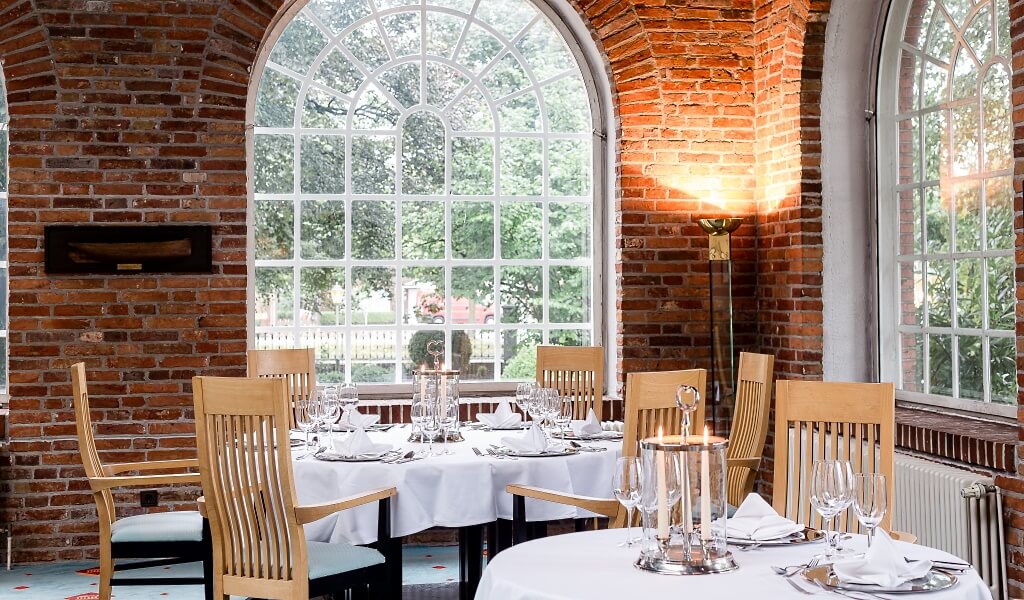
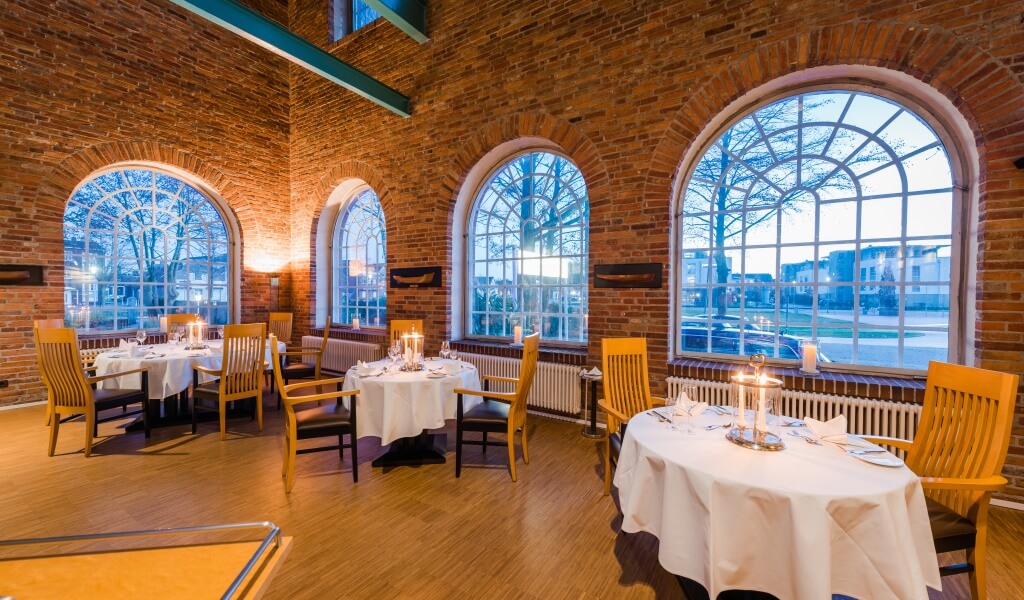
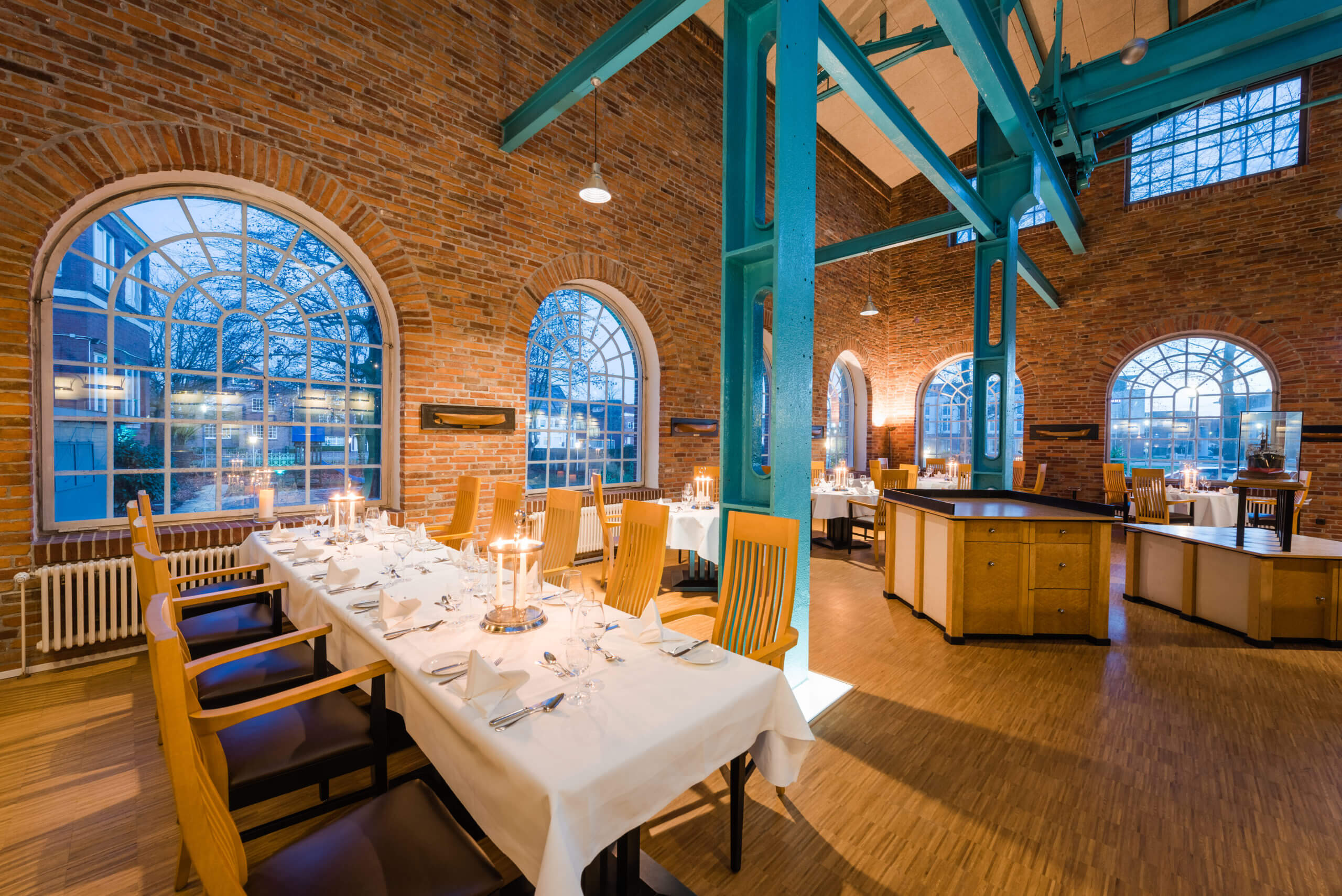
Delicious specialities
Let us spoil you with seasonal delicacies.
Regional products
We attach great importance to products and food from the region.
First class service
Our experienced staff will be happy to advise you.
History meets modernity
Restaurant Schnürboden
Every new ship built at the Meyer Werft shipyard started here.
Where you can now indulge in delicious specialities from our kitchen was once the so-called "Schnürboden". Every new ship built at the Meyer Werft shipyard started here. All the individual parts of a planned ship had to be drawn in original size. Because they originally measured and drew with strings, the name "lacing floor" came into being.
Then the malls were created, which are templates or models made of wood or sheet iron. They served as templates for the final dressings. The name Mallen comes from the Middle High German "mal", which means shape or marking. That is why the huge lacing floor was also called mall floor. Great skill and a lot of experience were needed to make these malls, because the usually curved or sinuous surfaces of the bracing and the outer skin of a ship had to be preconstructed true to the original.
The workpieces themselves were then cut, bent, forged or carpentered in the shipbuilding hall according to the models. Today, part of this complicated work has shifted to the designers' offices. With the help of computers, thousands of individual plans and drawings are created there for each new ship, which are then transferred directly onto steel plates using an optical marking process

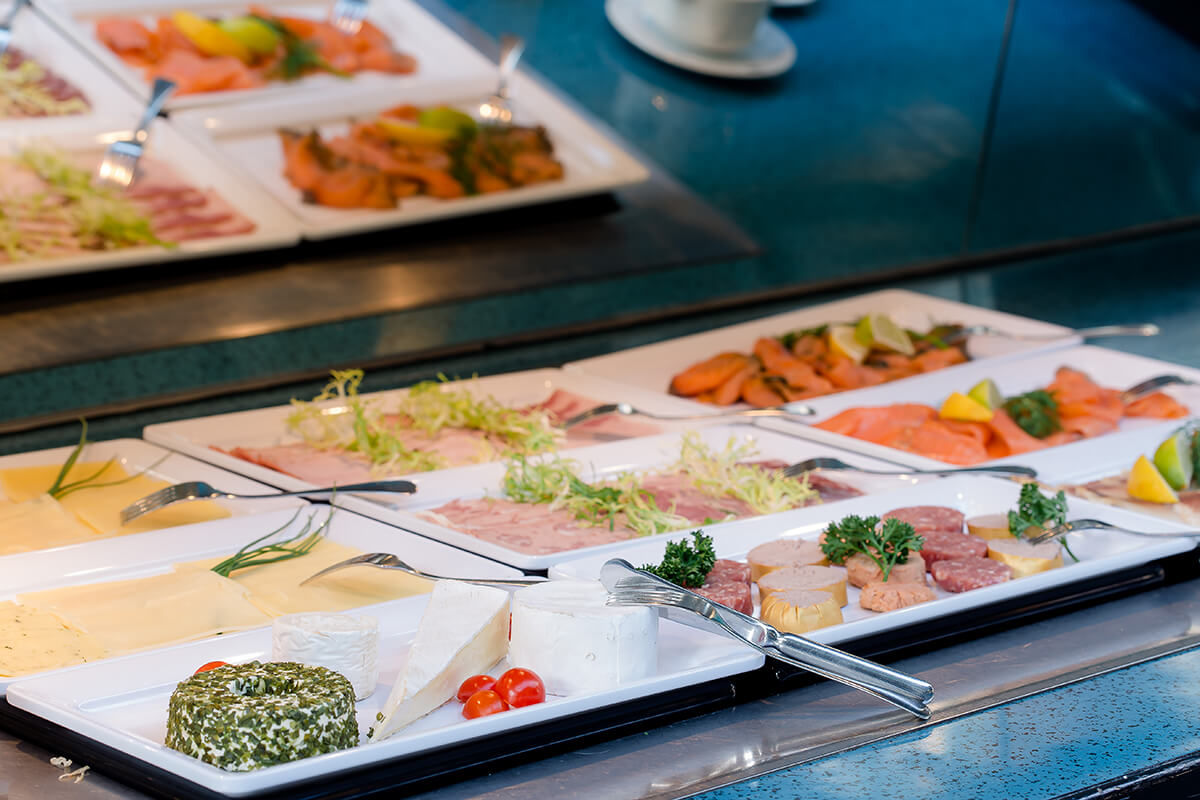

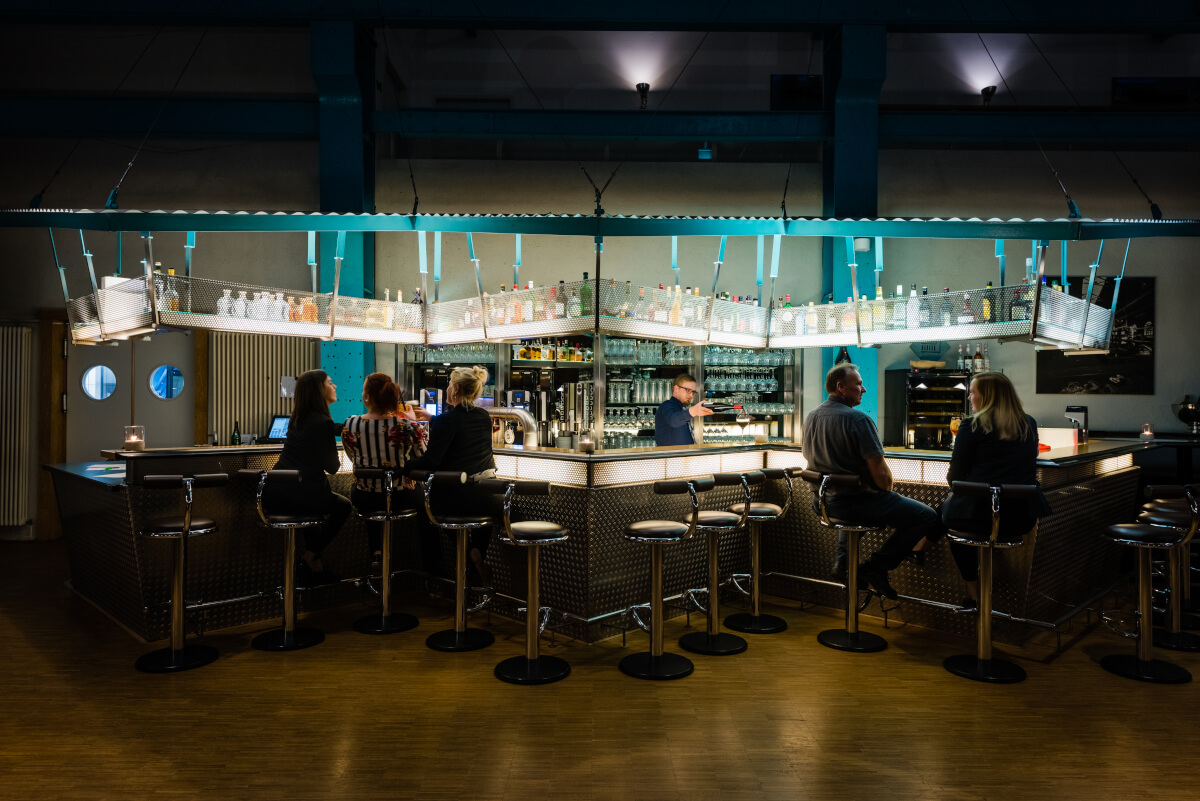
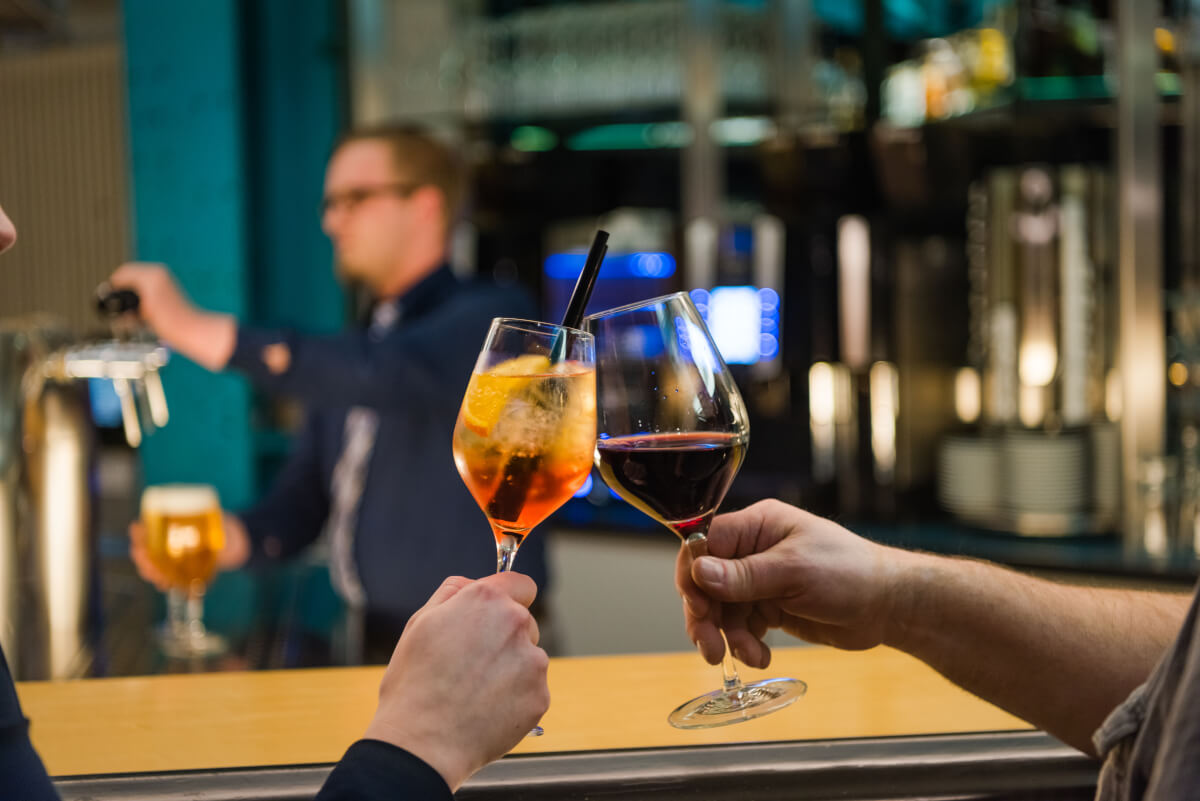


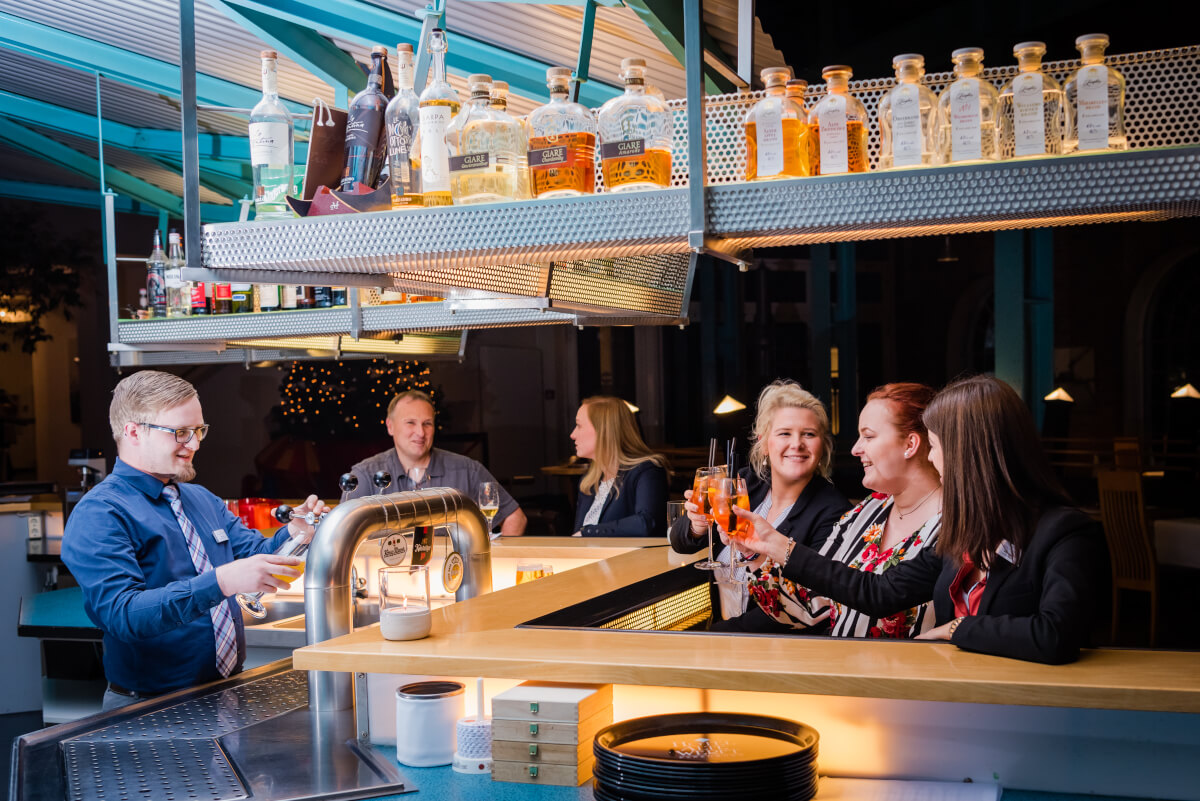
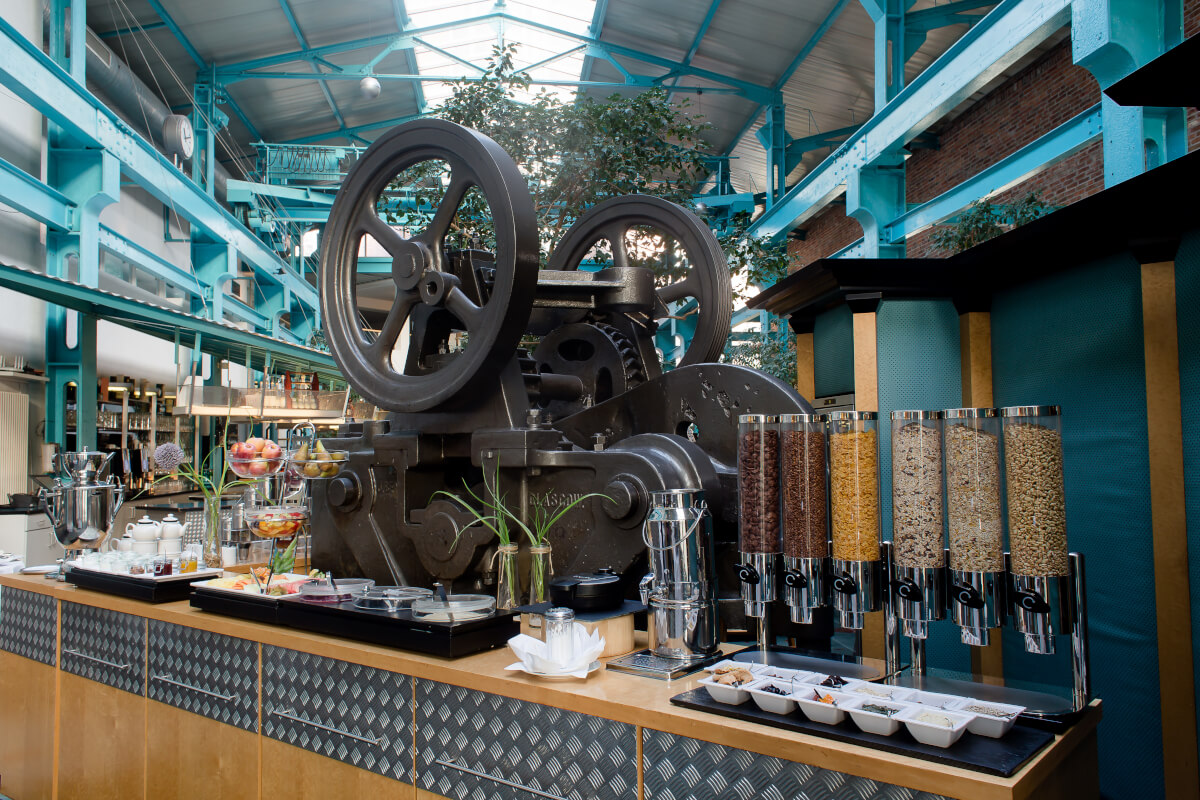
Opening Hours
Breakfast
Mo. - Fr.
06:00 am - 10:00 am
Sa.
06:30 am - 10:30 am
Su. and holiday
07:00 am - 11:30 am
Warm kitchen
Mo. - Su.
12:00 am - 02:00 pm
06:00 pm - 10:00 pm
Hotel bar
Mo. - Su.
06:00 pm - 11:00 pm
rich breakfast buffet
homemade jam
belgian waffles
24 types of tea
Our separate area in the Restaurant Schnürboden
Graf Goetzen
The Graf Goetzen is our separate area in the Restaurant Schnürboden. Here, too, we serve food and drinks from the Schnürboden menu.
The world still seemed to be in order in 1914. The economy was flourishing. The emperor's daughter celebrated her wedding and many Germans set off to seek their fortune in the African colonies.
In Papenburg, too, life went on as usual. The Meyer Werft shipyard had once again received an order from the German Foreign Office. The newbuilding with the name "Graf Goetzen" was intended for passenger traffic on Lake Tanganyika. For years, Meyer Werft had earned a good reputation for building flat-bottomed ships that were especially suited for the shallow African rivers.
In order to transport the "Graf Goetzen" to Africa, the ship was first assembled in Papenburg for a trial run, then dismantled again into individual parts, packed into watertight crates and sent to Africa by ship. From Dar es Salaam it went overland to Lake Tanganyika. Some workers and foremen from Meyer Werft also took part in this world voyage to assemble the ship on the spot. They managed the almost impossible: despite adverse circumstances, the men around Master Rüther succeeded in assembling the ship.
Hard times and a cinematic end.
But then the First World War broke out. In 1917, English troops approached. To prevent the "Graf Goetzen" from falling into their hands, the Papenburgers sank the ship - but before that they carefully greased the engine parts. Thus the "Graf Goetzen" suffered hardly any damage. She was lifted after the war and handed over to traffic under the name "Liemba". In 1951 the ship became famous: with Katherine Hepburn and Humphrey Bogart it played an important role in the film "African Queen". There, the steamer is the cannon-armed "Luisa", which - like all bad guys - has to go down in the end. But only in the cinema. Today, everyone knows the "Liemba" on Lake Tanganyika, because the former "Graf Goetzen" still makes its rounds every day.
The menu can be sent by e-mail on request
A popular place to stay for our guests
Our beer garden
Our cosy beer garden - with direct connection to our Restaurant Schnürboden - is a popular place to stay for our guests in summer.
Due to the optimal location to the cosy pedestrian zone of Papenburg as well as the proximity to the Papenburg marina, the beer garden is an ideal place to relax for cyclists or walkers. Let our kitchen crew spoil you with culinary delights. The opening hours depend on the current weather conditions and ist open until 11:00 pm at the most.

